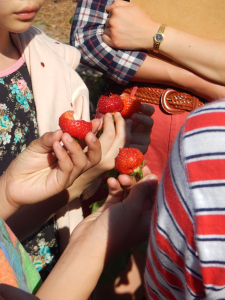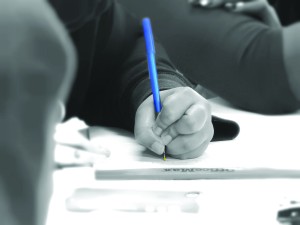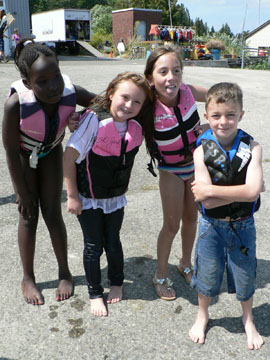I was blown away by the youth homelessness training program, The Ropes: Understanding and Engaging in Youth Homelessness. I expected a rigidly structured program that presented “scenario A” and then handed us “solution A.” Before even going, I resented what I assumed would be a simplified instruction manual on how to handle anything but simple situations. Reflecting on my own expectations, I feared an “us versus them” dichotomy would permeate the discussion.
Tristan Herman and Joseph Seia, the program leaders at New Horizons, knew better. They geared the three-hour conversation so that the fundamental question was not how can we handle youth homelessness, but how do we handle ourselves in the face of experiences we don’t understand. We could have spent the three hours combing through hyper-specific procedures for handling potential circumstances. Instead, Joe and Tristan compiled a list of effective strategies and spent the majority of the program developing one overarching tool – empathy.
- Tristan Herman
- Joseph Seia
We began the meeting with the important task of surfacing all societal and personal stereotypes. We shouted out the obvious misattributions of criminality and laziness that society unfairly imposes on homeless populations. Even though I recognize their fallacy on an intellectual level, I could feel my own prejudice gnaw at me as I voiced the stereotypes out loud. We deconstructed them. We found the kernel of truth in each stereotype and put it in the context of a system stained by internalized racism, self-fulfilling prophecies, and little upward mobility. I looked my own prejudice square in the face and saw how it distracted, how it dehumanized.
I come from a wealthy suburban town. I grew up in relatively stable family and living conditions. I’ve been afforded every opportunity in the world, and as consequence, I exude privilege. I don’t try to but it’s immediately obvious because it’s my reality – I’m lucky. So I carry a certain level of guilt in even trying to relate to individuals often defined by their misfortune. Tristan and Joe offered enormous insight in how they framed this dissonance.
First of all, youth experiencing homelessness develop a plethora of skills and character traits that demand my admiration:
- Resourcefulness
- Resilience
- Adaptability
- An unmatched will to survive
I’m envious of how kids my age possess such self-reliance. That’s worth recognizing.
Furthermore, these youth exist in a vastly different culture than I do, however their decision-making rationale is quite similar. They have to keep warm in difficult weather conditions, stay awake in case of danger, and endure the monotony of the day. They develop coping mechanisms. I would too. They must quickly acclimate themselves with street power dynamics, sometimes choosing between survival and morality. I would make the same choice every time. They develop a routine and sense of normalcy that makes uprooting their life on the streets undesirable. I seek a similar comfort in my own normalcy. The skills they develop to survive on the streets translate poorly to a work environment, just as my writing skills would do nothing for me on the streets.
I left the training sessions feeling a little less removed from the struggles these youth face. I didn’t have any more understanding of their experiences, but a greater appreciation for their choices – their human choices. I could see why they were stuck. I would be stuck too.
Filed under: Homeless Prevention | Tagged: ending homelessness, new horizon, youth | Leave a comment »







 the pleasure of working with a class of fifteen 5th graders from a local after-school program. Since many of them were already acquainted with the garden – either through a previous garden class or a simple meander through the neighborhood – we were able to delve a little deeper into the heart of the garden and what exactly makes it tick.
the pleasure of working with a class of fifteen 5th graders from a local after-school program. Since many of them were already acquainted with the garden – either through a previous garden class or a simple meander through the neighborhood – we were able to delve a little deeper into the heart of the garden and what exactly makes it tick.














